Resource Environmental

How does resource-efficient utilization contribute to sustainable development ?
Resource-efficient utilization is key to sustainable development, conserving resources, reducing waste, and promoting economic growth. It helps mitigate environmental impact, provides economic benefits, and enhances social well-being. As we face global challenges like climate change and resource scarcity, adopting resource-efficient practices is crucial for a sustainable future.

What are the benefits of implementing resource-efficient utilization in businesses ?
The benefits of implementing resource-efficient utilization in businesses include cost savings, environmental sustainability, competitive advantage, and risk mitigation. By reducing waste and improving resource management, companies can lower their operating expenses and increase profitability. Additionally, conserving resources and reducing waste can minimize a business's impact on the environment and contribute to a more sustainable future. Implementing these practices can also provide a competitive advantage by demonstrating a commitment to sustainability and social responsibility, attracting customers, employees, and investors who value these principles. Finally, resource-efficient utilization can help businesses mitigate risks associated with resource scarcity, price volatility, and regulatory changes, ensuring stable operations and a reliable supply chain.

How does a circular economy contribute to waste reduction and resource conservation ?
The circular economy model promotes waste reduction and resource conservation by advocating for the reuse and recycling of materials, reducing raw material extraction, extending product lifecycles, treating waste as a resource, encouraging the sharing economy and digital services, improving resource efficiency, promoting biodegradable and renewable resources, raising consumer awareness, and supporting regulatory policies. This approach challenges traditional linear economic models and offers a sustainable solution to address environmental issues related to waste and resource depletion.

How can we measure the effectiveness of resource-efficient utilization initiatives ?
Measuring the effectiveness of resource-efficient utilization initiatives is crucial for organizations and governments aiming to reduce waste, save costs, and minimize environmental impact. This process involves evaluating the outcomes of various initiatives designed to optimize resource use and comparing them against predefined goals or benchmarks. Here's a detailed approach to measure the effectiveness of such initiatives: 1. Define Key Performance Indicators (KPIs): Identify relevant KPIs such as resource consumption rates, cost savings, waste reduction, productivity metrics, and environmental impact. 2. Establish Baseline Data: Gather historical information on resource consumption, costs, waste levels, and productivity prior to the implementation of the initiatives. Note any external factors that might affect the baseline data. 3. Implement Monitoring Systems: Set up data collection methods such as automated tracking using technology like smart meters or IoT devices, regular audits, and employee feedback. 4. Analyze Results and Compare to Baseline: Evaluate performance against KPIs by analyzing collected data and identifying trends and anomalies. Compare the post-implementation data with the baseline to gauge improvements or setbacks. Create charts and graphs to visually depict the changes over time. 5. Report Findings and Recommendations: Compile detailed reports outlining the findings from the analysis phase. Based on the results, suggest adjustments to current practices or propose new initiatives. Share the reports with relevant stakeholders, including management, employees, and regulatory bodies. 6. Continuous Improvement: Iterate and optimize initiatives through a feedback loop mechanism for continuous feedback from all involved parties. Revise strategies based on performance data and stakeholder input. Integrate lessons learned into long-term sustainability plans. In conclusion, measuring the effectiveness of resource-efficient utilization initiatives requires a structured approach that includes defining clear KPIs, establishing baseline data, implementing monitoring systems, analyzing results, reporting findings, and committing to continuous improvement. By following these steps, organizations can ensure that their efforts to utilize resources efficiently are not only successful but also measurable and sustainable over time.
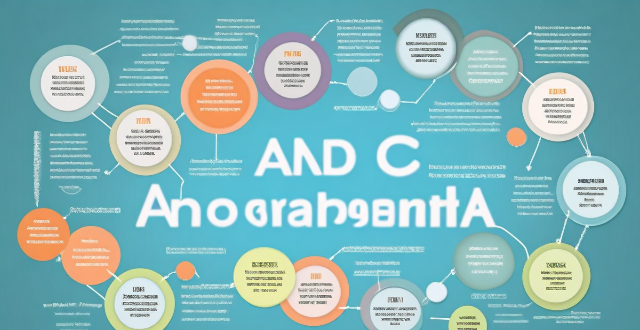
How can education and awareness programs help in promoting resource-efficient utilization ?
Education and awareness programs are crucial for promoting resource-efficient utilization. These programs can help individuals make informed decisions about their consumption habits and encourage them to adopt more sustainable practices. To maximize the impact of education and awareness programs, it is important to target different audiences, use multiple channels for dissemination, provide practical tips and strategies, and foster a sense of community and collective action towards sustainability goals. By doing so, these programs can contribute significantly to resource efficiency and promote sustainable development.

How will a lunar base address issues related to Earth's overpopulation or resource depletion ?
A lunar base could address Earth's overpopulation and resource depletion by reducing population pressure, enabling sustainable resource use, advancing science and technology, and promoting international cooperation.
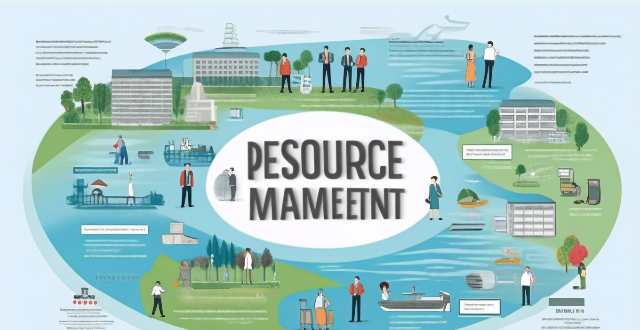
What are the legal and policy frameworks for water resource management at the national and international levels ?
Water resource management is a critical issue that affects the sustainability of ecosystems, the economy, and human well-being. To address this challenge, various legal and policy frameworks have been established at both national and international levels. At the national level, water resource management is governed by a combination of laws, regulations, and policies aimed at ensuring equitable access to water resources, protecting the environment, and promoting sustainable development. International legal and policy frameworks play a crucial role in addressing transboundary water issues and promoting global cooperation on water resource management. Effective water resource management requires a comprehensive approach that encompasses both national and international legal and policy frameworks.

What are the economic benefits of investing in clean production technologies ?
Investing in clean production technologies can bring a range of economic benefits to businesses, governments, and society at large. These benefits include cost savings through energy efficiency, resource efficiency, reduced maintenance costs, market advantages such as enhanced brand image and access to new markets, risk mitigation from environmental regulations and resource scarcity, innovation and growth opportunities, and broader environmental and social benefits that contribute to long-term economic prosperity.
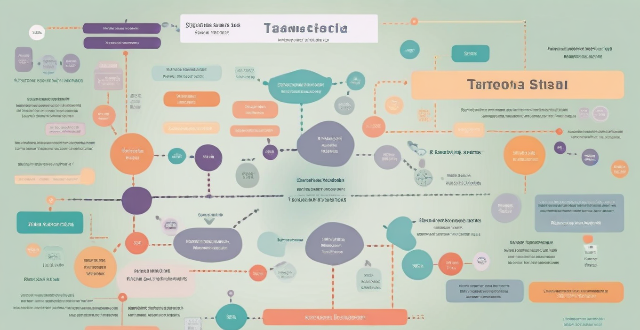
How can data analytics be used to inform school policy decisions and resource allocation ?
Using data analytics can greatly inform school policy decisions and resource allocation. By analyzing data, schools can identify areas for improvement, personalize learning experiences, evaluate teacher performance, allocate resources effectively, and enhance student support services. This approach leads to improved student outcomes, teaching quality, and resource use.

How do economic systems contribute to environmental problems and climate change ?
Economic systems, especially capitalism and industrialization, significantly impact the environment by promoting overproduction, waste, and reliance on fossil fuels. Issues such as built-in obsolescence, global trade emissions, and exploitation of natural resources exacerbate environmental problems. Additionally, population growth and urbanization increase consumption, while market failures and regulatory gaps often overlook environmental costs. Addressing these challenges requires a shift in economic priorities towards sustainability.

How do I choose the right online learning resource for my needs ?
When choosing an online learning resource, consider your learningWhen choosing an online learning resource, consider your learning quality, usability, cost consider your learning goals, style, content quality, usability, cost, and interactive features. Look for resources that align with your objectives, cater to your preferred method of learning, provide accurate and up-to-date information, are user-friendly and accessible, offer good value for money, and have interactive features and community support.

How can environmental ethics be integrated into business practices ?
Integrating environmental ethics into business practices is essential for sustainable development and responsible corporate citizenship. This can be achieved by adopting a sustainability mindset, assessing environmental impact, implementing eco-friendly practices, promoting green innovation, engaging in corporate social responsibility (CSR), complying with regulations and standards, and fostering a culture of continuous improvement. By doing so, companies can mitigate their environmental impact, enhance their reputation, attract socially conscious consumers, and potentially increase profitability through resource efficiency and innovation.

What is the role of education in promoting environmental awareness and action ?
Education plays a crucial role in promoting environmental awareness and action by providing knowledge about the environment, developing environmental values, encouraging active engagement, teaching problem-solving skills, and providing opportunities for leadership development.

How can education promote environmental ethics ?
Education is crucial for fostering environmental ethics among students by integrating interdisciplinary approaches, real-world examples, and skill development. Experiential learning through field trips, hands-on projects, and community engagement helps instill a deeper connection with nature. Teaching sustainable practices like reducing waste and conserving energy encourages responsible resource management. Encouraging critical thinking through debates and research assignments enhances understanding of complex environmental issues. Cultivating empathy and responsibility involves promoting nature connectivity and global perspectives. Assessment and reinforcement strategies such as project-based assessments and recognition programs help evaluate and motivate students' commitment to environmental stewardship.

Can environmental legislation effectively reduce pollution ?
Environmental legislation has the potential to effectively reduce pollution, but its success depends on various factors such as enforcement and compliance, public awareness and participation, technological innovation, political will, international cooperation, and economic considerations. Strong regulatory bodies, education campaigns, investment in clean technology, government prioritization of environmental protection, global collaboration, and balancing environmental goals with economic development are all crucial for the effectiveness of environmental legislation. Achieving lasting improvements in environmental quality requires ongoing effort from all sectors of society.

How has environmental legislation evolved over time ?
Environmental legislation has evolved over time, reflecting growing awareness of environmental issues. Early stages focused on preserving natural resources and conserving wildlife habitats, while post-World War II saw a shift towards pollution control through air and water quality regulations. The late 20th century introduced comprehensive environmental protection laws addressing multiple aspects of environmental degradation. Today's legislation prioritizes sustainable development and climate change mitigation, with a focus on public participation and transparency in decision-making processes.

What are the key components of environmental legislation ?
The article discusses the key components of environmental legislation, which are designed to protect the environment and promote sustainable development. These include Environmental Impact Assessment (EIA), Pollution Control Laws, Conservation Laws, and Sustainable Development Policies. The EIA process involves screening, scoping, reporting, review, and monitoring to identify and mitigate potential adverse impacts of proposed projects on the environment. Pollution control laws regulate emissions and discharges into air, water, and land to prevent pollution and protect public health and the environment through emission standards, discharge permits, and waste management regulations. Conservation laws aim to protect endangered species, habitats, and ecosystems from destruction or degradation caused by human activities through protected areas, species protection, and habitat restoration measures. Sustainable development policies focus on balancing economic growth with social equity and environmental protection to meet present needs without compromising future generations' ability to meet their own needs through integrated planning, resource efficiency, and fostering a green economy. Overall, environmental legislation plays a crucial role in protecting our planet's natural resources and ensuring sustainable development for future generations.

What role does technology play in improving environmental monitoring ?
Technology plays a pivotal role in enhancing environmental monitoring by enabling advanced data collection, analysis, visualization, reporting, and conservation efforts. Satellite imagery, drone surveillance, sensor networks, big data analytics, GIS, real-time reporting systems, and early warning technologies are among the key tools used. These advancements not only improve our understanding of environmental changes but also aid in managing resources and raising public awareness about ecological issues.

What are the economic costs of environmental degradation ?
The text discusses the economic costs of environmental degradation, which include both direct and indirect costs. Direct costs are easily quantifiable and include resource depletion, health impacts, agricultural losses, and infrastructure damage. Indirect costs are more difficult to quantify but still have significant economic impacts, such as lost biodiversity, reduced quality of life, social unrest, and climate change mitigation costs. The text emphasizes the importance of addressing environmental issues for long-term economic stability and growth.

How can we balance economic growth with environmental sustainability ?
Balancing economic growth with environmental sustainability requires a multifaceted approach that includes promoting green infrastructure and renewable energy, encouraging sustainable business practices, fostering innovation and technology development, educating and engaging stakeholders, and implementing policies and regulations. By taking these steps, we can create a more sustainable future where economic prosperity coexists with environmental well-being. Achieving this balance will require ongoing effort from all sectors of society, including governments, businesses, communities, and individuals alike.

How can environmental legislation be improved to better protect the planet ?
Environmental legislation is crucial for the planet's health and sustainable development. To improve it, enforcement mechanisms should be strengthened with more funding, stricter penalties, and public participation. Regulations should be updated regularly based on scientific advancements, adopting an interdisciplinary approach. Sustainable practices should be promoted through incentives for green technology, eco-labeling programs, and green procurement policies. Protecting vulnerable ecosystems requires expanding protected areas, funding restoration projects, and strengthening species conservation laws. Integrating climate change mitigation involves carbon pricing, renewable energy targets, and adaptation strategies. International cooperation should be enhanced through global agreements, shared resource management, and technology transfer. Communities should be educated and empowered through environmental education, community-based programs, and capacity building.

How does climate change influence resource competition and its impact on international relations ?
Climate change is significantly impacting resource competition and international relations by altering the availability and distribution of natural resources like water, food, and energy. This results in increased competition among nations for these resources, affecting economic systems, political structures, and global stability. Water scarcity due to changing precipitation patterns is causing conflicts, especially in regions sharing rivers or aquifers. Changes in temperature and rainfall patterns are affecting food production, leading to increased import dependency and potential conflicts over limited resources. Energy resource competition is shifting towards renewables due to climate change impacts on fossil fuels. Countries are engaging in mitigation and adaptation efforts through international agreements, technology transfer, and disaster risk reduction. While climate change presents challenges, it also offers opportunities for global cooperation in addressing this common threat.

How can climate and environmental policies be designed to promote sustainable economic growth ?
This text discusses the integration of environmental considerations into economic planning, promoting renewable energy sources, encouraging energy efficiency, supporting green infrastructure, promoting circular economy practices, strengthening environmental regulations, and fostering international cooperation to promote sustainable economic growth.

What are the consequences of not having adequate environmental legislation ?
The text discusses the importance of adequate environmental legislation and its absence's consequences. It outlines the impact on environmental degradation, human health, economic stability, and social welfare. The introduction emphasizes the need for such laws for sustainable development and planet protection. Four main points are discussed: 1. Environmental Degradation includes loss of biodiversity, pollution, deforestation, and ocean acidification. 2. Human Health Impacts cover respiratory problems, waterborne diseases, and food safety concerns. 3. Economic Implications involve resource depletion, job losses, and tourism decline. 4. Social Welfare Issues include inequality, displacement, and conflict over resources. The conclusion stresses the urgency for governments worldwide to implement and enforce strong environmental laws for a sustainable future.

What is the role of individuals in addressing climate change and environmental degradation ?
This article discusses the role of individuals in combating climate change and environmental degradation. It highlights the cumulative impact of individual actions, their potential to inspire others, and the political pressure they can exert. The article provides practical steps individuals can take, such as reducing their carbon footprint, supporting renewable energy, waste reduction and recycling, advocating for environmental policies, and spreading awareness. It emphasizes that collective efforts can make a significant difference in creating a more sustainable future for our planet.

What are the benefits of implementing circular economy policies ?
Implementing circular economy policies brings environmental, economic, and social benefits. Environmentally, it reduces resource consumption, lowers greenhouse gas emissions, and improves waste management. Economically, it creates jobs, saves costs, and drives innovation. Socially, it ensures resource security, improves public health, and empowers consumers. Overall, adopting these policies shifts towards a sustainable system that prioritizes long-term planetary health.

How do climate adaptation strategies fit into environmental law frameworks ?
Climate adaptation strategies are vital for reducing vulnerability to climate change and fit into environmental law frameworks by providing a legal basis for implementation. These strategies involve measures to help communities and ecosystems adapt to changing climatic conditions. Environmental laws establish principles like the precautionary principle and intergenerational equity, guiding climate adaptation development. Integrating adaptation into existing environmental laws is crucial for effective implementation. Key components of adaptation strategies include vulnerability assessment, plan development, measure implementation, and progress monitoring. Challenges in implementing adaptation through environmental law include insufficient authority, resource constraints, and lack of coordination, but opportunities exist to enhance legal mandates, provide financial incentives, and promote cross-sector collaboration. Overall, climate adaptation strategies are essential within environmental law frameworks to ensure reduced vulnerability and enhanced resilience to climate change impacts.
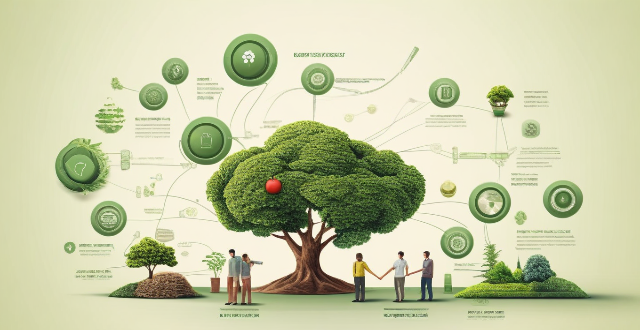
What are the benefits of using climate services in agriculture ?
Climate services offer significant benefits to agriculture, enhancing productivity and sustainability. They aid in crop planning, risk mitigation, resource optimization, market competitiveness, and environmental stewardship. By using these services, farmers can make informed decisions about crop management and resource allocation, leading to a more resilient and profitable agricultural sector.
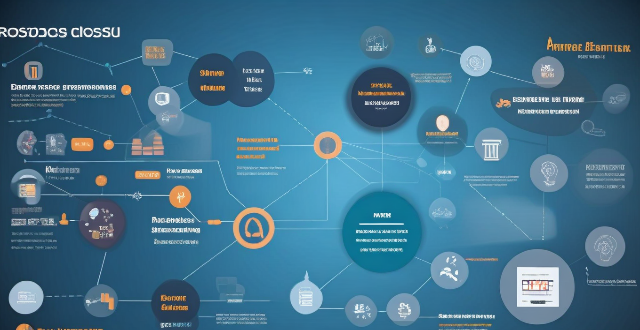
What is Environmental, Social, and Governance (ESG) ?
Environmental, Social, and Governance (ESG) is a framework used by investors to assess the sustainability and ethical impact of companies in which they invest. It is a set of criteria that helps investors evaluate a company's performance in three key areas: environmental stewardship, social responsibility, and corporate governance. By considering these factors, investors can make informed decisions about where to allocate their capital and support companies that prioritize sustainable practices and positive societal impact. The environmental aspect focuses on reducing greenhouse gas emissions, conserving resources, and protecting biodiversity. The social aspect emphasizes diversity, inclusion, labor rights, and community involvement. The governance aspect focuses on board composition, risk management, and stakeholder engagement. Overall, ESG helps investors support companies that prioritize sustainable practices and positive societal impact.

What role do schools play in fostering environmental consciousness among students ?
Schools play a pivotal role in nurturing environmental awareness in students by integrating eco-themes into curriculum, organizing extracurricular activities, maintaining green infrastructure, engaging with the community, modeling sustainable behaviors, setting eco-friendly policies, running awareness campaigns, offering service learning opportunities, and implementing assessment and recognition programs. These efforts not only educate students about environmental issues but also empower them to take actionable steps toward preserving the planet.